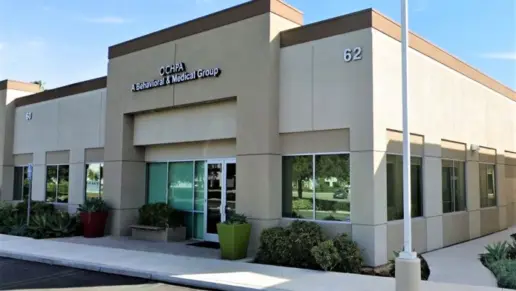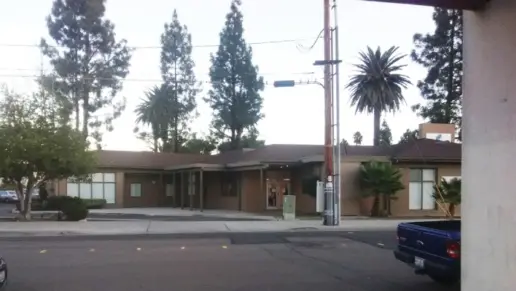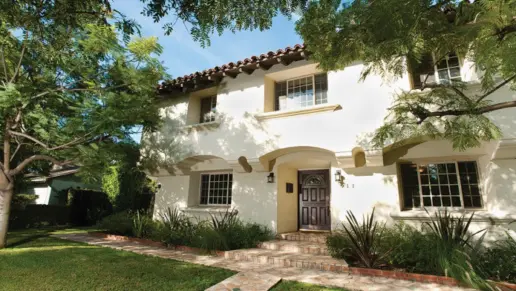About La Ventana Treatment Programs
La Ventana Treatment Programs in Santa Monica, California provided holistic evidence based treatment for substance use and co-occurring disorders. They were a private treatment center that offered clients a luxurious facility to live in while they recovered from addiction. This location might be closed now, but La Ventana also offers care at nearby locations in Thousand Oaks and Along with its residential services, La Ventana also offers partial hospitalization programs and intensive outpatient programs for individuals ready to transition from residential care back to society.
Their staff has years of experience and utilizes the latest treatment techniques for addiction recovery. Clients can receive treatment for various substances such as alcohol, cocaine and opioids. This facility has accreditation from numerous organizations including SAMHSA and the California Department of Social Services.
I like that La Ventana’s residential treatment program provides a wide range of treatments that can help clients on their path to sobriety. In individual counseling, therapeutic approaches that might be used include dialectical behavioral therapy (DBT) and cognitive behavioral therapy (CBT).
Along with therapy, La Ventana offers education on life skills and coping skills. Meditation, mindfulness and meal preparation are among several other tools provided at this facility that are designed to help clients better able to prevent relapse.
When clients transition to intensive outpatient or partial hospitalization treatment, clients will have multiple sessions a day throughout the week. Depending on staff recommendations, clients will attend sessions either as little as three days a week or as much as six days a week. Each day involves two group sessions and a one on one session. Clients will get the option to reside at their own residence or stay at one of La Ventana’s residences.
Other Forms of Payment
Self-pay involves paying for treatment out of your own pocket. You can use savings or credit, get a personal loan, or receive help from family and friends to fund your treatment. If you don't have insurance or your insurance plan doesn't cover a specific program, self-pay can help ensure you still get the care you need.
Private insurance refers to any kind of healthcare coverage that isn't from the state or federal government. This includes individual and family plans offered by an employer or purchased from the Insurance Marketplace. Every plan will have different requirements and out of pocket costs so be sure to get the full details before you start treatment.
Addiction Treatments
Levels of Care
Treatments
The goal of treatment for alcoholism is abstinence. Those with poor social support, poor motivation, or psychiatric disorders tend to relapse within a few years of treatment. For these people, success is measured by longer periods of abstinence, reduced use of alcohol, better health, and improved social functioning. Recovery and Maintenance are usually based on 12 step programs and AA meetings.
Drug rehab in California teaches participants constructive ways to stay clean and sober. Treatment revolves around helping individuals stop using the substance they are addicted to and learn healthy habits to avoid relapse.
Many of those suffering from addiction also suffer from mental or emotional illnesses like schizophrenia, bipolar disorder, depression, or anxiety disorders. Rehab and other substance abuse facilities treating those with a dual diagnosis or co-occurring disorder administer psychiatric treatment to address the person's mental health issue in addition to drug and alcohol rehabilitation.
A combined mental health and substance abuse rehab has the staff and resources available to handle individuals with both mental health and substance abuse issues. It can be challenging to determine where a specific symptom stems from (a mental health issue or an issue related to substance abuse), so mental health and substance abuse professionals are helpful in detangling symptoms and keeping treatment on track.
Opioid rehabs specialize in supporting those recovering from opioid addiction. They treat those suffering from addiction to illegal opioids like heroin, as well as prescription drugs like oxycodone. These centers typically combine both physical as well as mental and emotional support to help stop addiction. Physical support often includes medical detox and subsequent medical support (including medication), and mental support includes in-depth therapy to address the underlying causes of addiction.
Programs



Clinical Services
Cognitive Behavioral Therapy (CBT) is a therapy modality that focuses on the relationship between one's thoughts, feelings, and behaviors. It is used to establish and allow for healthy responses to thoughts and feelings (instead of unhealthy responses, like using drugs or alcohol). CBT has been proven effective for recovering addicts of all kinds, and is used to strengthen a patient's own self-awareness and ability to self-regulate. CBT allows individuals to monitor their own emotional state, become more adept at communicating with others, and manage stress without needing to engage in substance abuse.
Creativity is inherently healing, and can help those in recovery express thoughts or feelings they might not otherwise be able to. Creative arts therapy can include music, poetry/writing, painting, sculpting, dance, theater, sandplay, and more. Unlike traditional art, the final product matters far less than the experience of creation and expression itself.
Dialectical Behavior Therapy (DBT) is a modified form of Cognitive Behavioral Therapy (CBT), a treatment designed to help people understand and ultimately affect the relationship between their thoughts, feelings, and behaviors. DBT is often used for individuals who struggle with self-harm behaviors, such as self-mutilation (cutting) and suicidal thoughts, urges, or attempts. It has been proven clinically effective for those who struggle with out-of-control emotions and mental health illnesses like Borderline Personality Disorder.
Eating disorders include anorexia, bulimia, binge eating, and dysfunctional eating patterns. Many psychologists and other mental health professionals consider eating disorders to be food addictions, meaning food is being used in an addictive way (similar to drug or alcohol addiction). Certain substance abuse treatment programs will have treatment for eating disorders as one of the services offered. An eating disorder may also present as a co-occuring disorder or dual diagnosis alongside drug and alcohol addiction.
Research clearly demonstrates that recovery is far more successful and sustainable when loved ones like family members participate in rehab and substance abuse treatment. Genetic factors may be at play when it comes to drug and alcohol addiction, as well as mental health issues. Family dynamics often play a critical role in addiction triggers, and if properly educated, family members can be a strong source of support when it comes to rehabilitation. La Ventana Treatment Programs - 7th Street brings healing, understanding, and communication to the recovery process for all through their signature Family Immersion Program. The family unit has transformed and plays a central role in the treatment of substance abuse. Family is defined by their clients and not only include biological parents, siblings, and relatives but also significant others, friends, and those who are close to their hearts in their recovery. Evidence based practice provides family therapy that meets the needs of all family members and not just the person presenting the substance abuse issue. Addiction affects every member and the goal at La Ventana Treatment Programs - 7th Street is to treat their clients but also to treat the family unit defined by their clients.
Group therapy is any therapeutic work that happens in a group (not one-on-one). There are a number of different group therapy modalities, including support groups, experiential therapy, psycho-education, and more. Group therapy involves treatment as well as processing interaction between group members. The Santa Monica office offers a variety of groups for both PHP and IOP programs tailored to client needs including a process group, stress management, music therapy, yoga therapy, rediscovering recovery, relapse prevention, thinking for a change, stages of change, self-exploration, co – occurring disorders, Seeking Safety, life skills, mindfulness, self-care, cognitive behavioral therapy, art therapy, anger management, meditation, dialectical behavioral therapy and more.
In individual therapy, a patient meets one-on-one with a trained psychologist or counselor. Therapy is a pivotal part of effective substance abuse treatment, as it often covers root causes of addiction, including challenges faced by the patient in their social, family, and work/school life.
Life skills trainings involve all the skills a person must have in order to function successfully in the world. These include time management, career guidance, money management, and effective communication. Truly successful addiction recovery is based on the ability to not only live substance-free, but to thrive. Life skills teaches the practical necessities of functioning in society, which sets clients up for success in life, and therefore sobriety.
Amenities
-
Private Setting
-
Yoga Studio
Accreditations

The Joint Commission, formerly known as JCAHO, is a nonprofit organization that accredits rehab organizations and programs. Founded in 1951, the Joint Commision's mission is to improve the quality of patient care and demonstrating the quality of patient care.
Joint Commission Accreditation: Yes

The Substance Abuse and Mental Health Services Administration (SAMHSA) is a branch of the U.S. Department of Health and Human Services. Established in 1992 by congress, SAMHSA's mission is to reduce the impact of substance abuse and mental illness on American's communities.
SAMHSA Listed: Yes

State Licenses are permits issued by government agencies that allow rehab organizations to conduct business legally within a certain geographical area. Typically, the kind of program a rehab facility offers, along with its physical location, determines which licenses are required to operate legally.
State License: California
Contact Information
1243 7th Street
Suite B
Santa Monica, CA 90401


